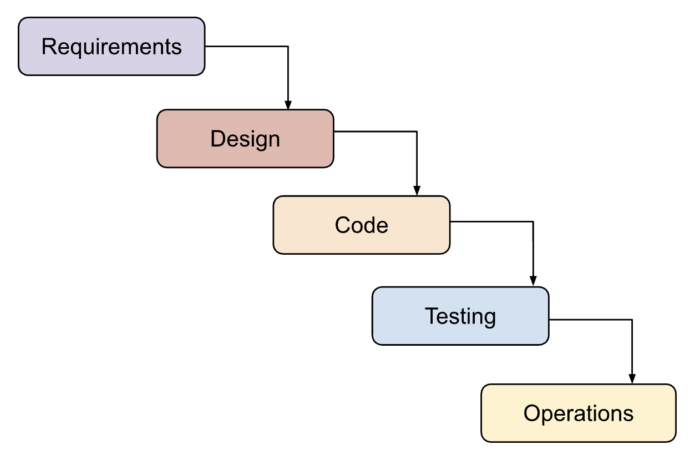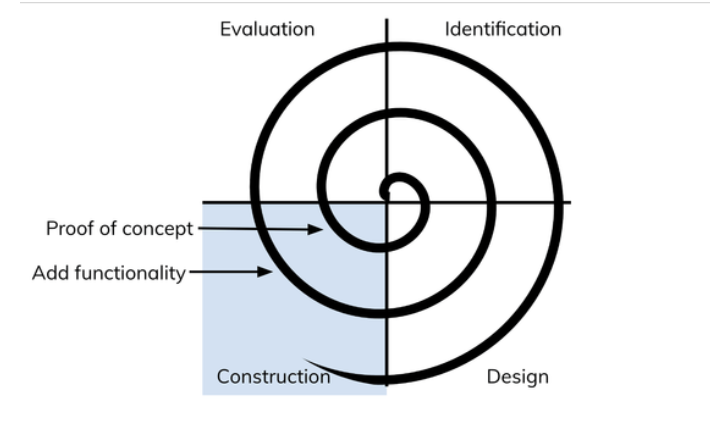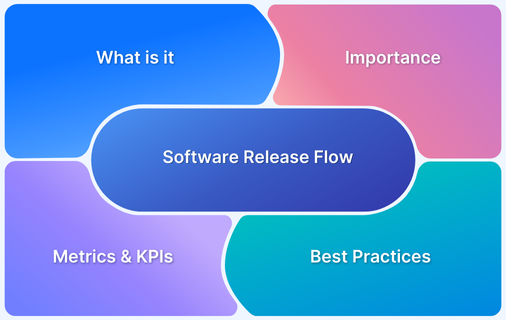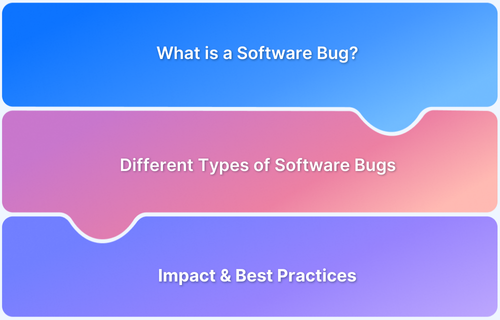Software Development Process is an iterative logical process that aims to create programmed software to meet unique business or personal objectives, goals, or processes. The objective is achieved by a software developer writing computer code. However, it also involves multiple steps such as research, designing a data and process flow, writing technical documentation, comprehensively testing, debugging, and pushing it iteratively to live.
This post will further explain the broader Software Development process and how Testing fits in, which should help young developers and freelancers understand how a robust engineering team functions.
What is Software Development Process?
The Software Development Process is a series of steps followed to design, create, test, and maintain software applications. It typically includes stages like planning, designing, coding, testing, deployment, and ongoing maintenance to ensure the software meets user needs and functions as expected.
The need for a Software Development Process
Software is developed for four common reasons:
- To meet the specific needs of a specific client/business (the case with custom software)
- To solve a real-world problem
- For personal use (e.g., a pharmacy owner may require inventory managing and billing software.)
- The demand for better quality management has enforced the discipline of software engineering, which focuses on applying the systematic approach of the engineering paradigm to the software development process.
Several software development methodologies are available for efficient project management like Agile, Waterfall, Scrum, Kanban, and others.
Usually, the software development process is categorized into:
- Backend Development
- Frontend Development
10 Stages of Software Development Process
Following are the steps involved in the software development process:
1. Requirement Gathering
The first step in the software development process involves understanding the project’s goals and collecting detailed requirements from stakeholders. This includes identifying what the users need, the functionality the software should provide, and any constraints. This stage sets the foundation for the entire project by defining what the software will achieve.
2. Feasibility Analysis
Once the requirements are gathered, the next step is to conduct a feasibility study. This involves analyzing whether the project is achievable from a technical, financial, and operational standpoint. It helps determine if the software can be built within the available budget, time, and resources while meeting the user’s needs.
3. System Design
In this stage, the technical architecture of the software is designed. This includes deciding on the software’s overall structure, technologies to be used, user interface design, database models, and the flow of data within the system. Detailed system design helps in ensuring that all components work together seamlessly.
4. Prototyping
Prototyping involves creating a working model or a mock-up of the software to visualize and test key features before full-scale development. It allows stakeholders to review and provide feedback early in the process, helping to refine requirements and design elements. This stage helps mitigate risks by validating ideas before investing in full development.
5. Development
In this phase, the actual coding of the software begins. Developers write code based on the design specifications and implement the features required. This is usually the most intensive phase of the software development process and involves converting design documents into functional software components.
6. Testing
Once the code is written, the software undergoes rigorous testing. The goal is to identify and fix any bugs or issues, ensuring the software functions as intended and meets the quality standards. Testing can include unit tests, integration tests, system tests, and user acceptance tests, among others. This phase is critical to ensure reliability and performance.
7. System Integration
The integration phase focuses on ensuring that different software modules work together as a cohesive system. If the software is built in parts or has dependencies, those components need to be integrated and tested together to ensure smooth operation and proper communication between them.
Read More: What is System Integration Testing
8. Deployment
After successful development and testing, the software is ready to be deployed into a live environment. This stage involves releasing the software to the users or into production systems. It can include activities like configuring servers, setting up databases, and ensuring the software runs in the target environment.
9. Maintenance
Once deployed, the software enters the maintenance phase. During this time, the software may require updates to fix bugs, patch security vulnerabilities, or add new features based on user feedback. Regular maintenance ensures the software continues to perform effectively over time and remains aligned with evolving user needs.
10. End-of-life
Eventually, every software system reaches the end of its life. This stage involves retiring the software when it is no longer useful or supported, often due to technological advancements, changing business requirements, or better alternatives. End-of-life management ensures a smooth transition for users to new systems or software replacements.
What is PDLC (Product Development Lifecycle)
The product development life cycle (PDLC) is the complete process of creating and launching a product into the market. It includes the following 5 steps:
- Product Conceptualization
- Product Architecture and Design
- Product Development
- Product Release
- Product Realization and Future Upgrades
1. Product Conceptualisation
Every product has to start with an idea. In some cases, this might be reasonably simple, conceptualizing a new product on something already existing. In a few cases, it may be something out of the box. Many leading tech companies have innovation departments focusing solely on coming up with ‘the next big thing.’
Once the idea is selected, significant time is spent on Market research, Functional analysis, Technical analysis, Feasibility analysis, ROI, and Prototype development.
2. Product Architecture and Design
The next phase is to design the product’s technical architecture. In this phase, the business team provides the business specification to technical teams, who then build the product’s architecture and create workflow diagrams and DB design.
- Product Development: In this phase, development teams start developing the product. Development teams may use Waterfall or Agile methodologies to develop a product. Most software companies are adopting Agile testing metrics to make product development faster. In this phase, teams develop and perform unit tests, integration tests, performance tests, and any other testing types depending on the product type. Once this phase is completed, the team creates an Alpha release which may be primarily internal and limited to a few external users.
- Product Release: Once the team is confident about the functionality, usability, and stability of the product based on the Alpha release and receives feedback, the team moves towards the Beta release phase. In the beta release, companies may choose to open it to all the customers or choose to provide access to a limited number of customers who request Beta access. In this phase, the team wants to get feedback from external customers and make any changes accordingly. Once the team is satisfied with the beta feedback and necessary changes are made to the product, a public release of the product occurs. Public release involves broad announcements, PR, and so forth to create an impact depending on the product.
- Product Realization and Future Upgrade: The next phase continuously monitors the product, its usage, and growth. Along with future enhancements, teams must prioritize the bug fixes based on the customer impact.
Example:
Most companies adopt these stages to bring a new product to the market. For example, when PayPal came up with the in-context checkout product, they went through all these stages to ensure a successful product launch.
- They did thorough market research on why In-context is essential compared to out-of-context.
- Defined the primary objective of the new product, which is the reduction in the drop-off rate
- Did a thorough analysis of tech feasibility and shoppers’ adoption
- Worked with the design teams to create a seamless in-context experience
- For a project this big, they created three delivery teams, each running its scrum managed by a central program
- They released the product MVP in a limited market and kept monitoring the metrics
- The product was refined based on the feedback before launching it to a broader market
What is SDLC (Software Development Lifecycle)
Software Development Life Cycle is a systematic approach used by the software industry to design, develop, and test high-quality software. The main goal behind SDLC is to produce high-quality software that meets or exceeds customer expectations and reaches completion within times and cost estimates.
SDLC consists of the following activities:
- Plan: The most crucial aspect of software development and requirement analysis is done by the organization’s most skilled and experienced software engineers. After gathering and analyzing requirements from the client, the scope document is generated.
- Design: Software Engineers analyze the Business Requirements and design solutions to meet those in the most efficient way.
- Implement: Here, the software engineers start writing the code as per the analyzed requirements.
- Test: It is a crucial stage that aims to discover any errors, bugs, or flaws in the software
- Document: Each activity performed in the project is documented for future reference and enhancement in the development process
- Deployment: The software is deployed once it is approved for release.
- Maintaining: This phase occurs once the product is operational. It involves the modification of a few features over some time. This phase also focuses on monitoring the system performance, bug rectification, and implementing requested changes.
Software Development Methodologies
Usually, there are 2 types of software development methodologies –
- Waterfall Model
- Agile Model
- Spiral Model
- Incremental Model
Waterfall Model of Software Development Process
A waterfall model represents a linear and sequential approach to software development. The following steps are carried out sequentially in a waterfall approach.
- Requirements: gather, analyze, and document
- Design: resulting in the software architecture
- Code: the development, proving, and integration of software
- Testing: the systematic discovery and debugging of defects
- Operations: the installation, support, and maintenance of complete systems
In an actual Waterfall implementation, each of the above steps represents a different stage of software development, and every stage generally terminates before the next stage begins. There exists a stage gate between each; e.g., before the designing stage can commence, it’s necessary to have the customer’s approval.
Agile Model of Software Development Process
Agile methodology evolved from different lightweight software approaches in the 1990s and is a response to some project managers’ dislike of the rigid, linear waterfall methodology. It focuses on flexibility, continuous improvement, and speed by following an incremental approach.
- Developers start with simplistic project designs and then work on small modules.
- The work on these modules is carried out in weekly or monthly sprints, and at the end of each sprint, project priorities are evaluated, and tests are executed. Thus, the equivalent stages of the waterfall model are completed at every single sprint.
- These sprints allow for exploring bugs and customer feedback to be incorporated into the design before the next sprint begins.
Benefits of Agile Development
The key advantages of Agile development Methods and Agile project management are the following:
- Better collaboration and involvement of stakeholders
- Adaptability to change
- Lesser Risk
- Better ROI
- Enhanced Quality
- Faster Release Cycles
Spiral Method of Software Development Process
The Spiral Model is an iterative, risk-focused approach to software development that emphasizes continuous refinement. Each “spiral” or phase of the process includes planning, risk assessment, design, development, and evaluation. It’s particularly useful for large, complex projects where the risks need to be managed and requirements may evolve over time.
Key Features:
- Risk Management: At the start of each cycle, risks are identified, assessed, and mitigation strategies are developed. This helps prevent costly errors later in the process.
- Iterative Process: Instead of following a linear path, the spiral model allows revisiting and refining previous phases, ensuring flexibility.
- Multiple Phases: Each spiral cycle includes steps like planning, prototyping, testing, and feedback, allowing for gradual improvement.
Advantages:
- Risk Reduction: By addressing risks early, the project is less likely to encounter major issues later on.
- Flexibility: The iterative nature makes it adaptable to changing requirements or new insights.
- Customer Feedback: Regular feedback loops ensure that the project stays aligned with user expectations.
Incremental Method of Software Development Process
The Incremental Model develops software in small, manageable sections or increments. Each increment represents a functional part of the system, which is built and delivered in stages. New functionality is added in successive increments until the full system is complete. This model is well-suited for projects that require early delivery of core features and can benefit from regular feedback.
Key Features:
- Modular Development: The software is built in small parts (increments), allowing for easier management and testing of individual features.
- Frequent Deliverables: Each increment delivers a functional piece of the software, giving stakeholders something to use and provide feedback on early in the process.
- Continuous Integration: After each increment, the module is integrated into the existing system, ensuring compatibility and a working product at every stage.
Advantages:
- Early Value Delivery: The team can deliver functional parts of the system early, which is particularly useful in environments where users need partial functionality quickly.
- Improved Testing and Debugging: With each increment being smaller in scope, testing becomes more focused, making it easier to identify and fix issues early.
- Flexible to Changes: If requirements change, future increments can be adjusted without major disruptions to the overall development.
Metrics of Software Development Process
Measuring the success and efficiency of the software development process is crucial for delivering high-quality products on time and within budget. Below are some of the key software development metrics that provide valuable insights throughout the development lifecycle:
1. Productivity Metrics
- Lines of Code (LOC): Measures codebase size; not the sole indicator of productivity.
- Function Points: Quantifies functionality delivered by the software, focusing on capability rather than code volume.
- Velocity: Measures work completed in a sprint or iteration, helping estimate capacity for future work.
2. Quality Metrics
- Defect Density: Number of defects per unit of code (e.g., per thousand lines); lower density indicates higher quality.
- Code Review Feedback Time: Time taken to address code review feedback, reflecting responsiveness to quality improvement.
- Code Churn: Frequency of code changes; high churn may indicate instability or evolving requirements.
3. Efficiency Metrics
- Lead Time: Total time from request inception to delivery; shorter times indicate a more efficient process.
- Cycle Time: Time taken to complete a single task or cycle; shorter times reflect efficient workflows.
- Throughput: Number of features or user stories completed in a given timeframe; high throughput signifies productivity.
4. Customer Satisfaction Metrics
- Net Promoter Score (NPS): Measures customer satisfaction and likelihood to recommend the software; higher scores indicate loyalty.
- Customer Support Response Time: Speed of support response and issue resolution; quicker times enhance satisfaction.
5. Codebase Quality Metrics
- Code Complexity: Assesses maintainability and readability using metrics like cyclomatic complexity.
- Code Coverage: Proportion of code covered by automated tests; higher coverage suggests better testing practices.
- Technical Debt: Quantifies suboptimal code needing future attention; managing this is crucial for long-term health.
6. Team Performance Metrics
- Team Velocity: Average output of the team over a period, indicating capacity and efficiency.
- Team Satisfaction: Surveys or feedback mechanisms to gauge team morale; higher satisfaction links to better performance.
Conclusion
That said, the process must be well-managed and documentation enforced, as the rapid pace of development can lend itself to disorganization. However, if done correctly, it results in a fast, low-risk, and efficient workflow.
Most of the matured companies now use Agile methodology. Most of the customers you speak with talk about Agile processes unless they mention that they are not agile. Though no companies truly follow complete agile methods, they might be using some hybrid model.
As one is familiar with the basics of the Software Development Process, the next step is to learn the different types of software testing strategies and approaches that will further streamline your learning curve as a QA, developer, tester, or SDET.











